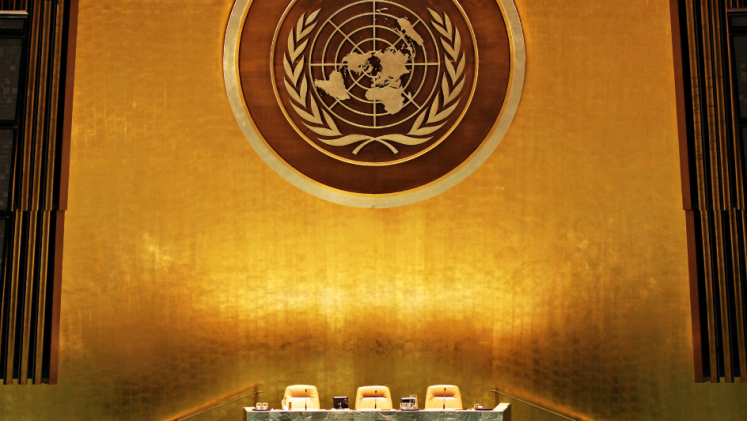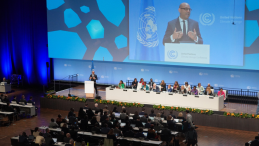The United Nations General Assembly is one of the six principle organs of the United Nations. It is a crucial forum for international relations, bringing together UN Member States to discuss and deliberate over a range of topics from peace to climate. Its meeting place, the General Assembly Hall at United Nations Headquarters in New York City, is a visibly iconic part of the UN. From its podium, the Secretary-General and heads of state address the world. Every third Tuesday of September, the General Assembly convenes for a new year long deliberative and policymaking session.
What is the UN General Assembly and what does it do?
The UN General Assembly, which also goes simply by the General Assembly, the Assembly or UNGA, is the main policymaking organ of the United Nations and is comprised of all 193 Member States. Just like how most nations around the world have a national assembly or parliament, the United Nations has the General Assembly represented by the Member States. Each Member State is formally represented by a diplomatic mission in the form of a permanent representation to the United Nations, which is typically led by an ambassador.
Among its formal functions and powers, which are set out in Chapter IV of the UN Charter, are to approve the UN budget, elect non-permanent members to the Security Council and to appoint the Secretary-General (SG). However, among its primary roles is to make recommendations to the Member states on specific global challenges and issues. Decisions are formally adopted as “resolutions”, which are voted on by all Member States who have an equal vote. A two thirds majority is required to adopt decisions on peace and security, new members and budget. A simple majority is all that is needed to pass resolutions concerning other questions.
The Assembly works on its agenda through a committee system. In total there are six Main Committees. These include Disarmament & International Security, Economic & Financial, Social, Humanitarian & Cultural, Special Political & Decolonization, Administrative & Budgetary and Legal.
The Assembly mainly meets from September to December and then from January to September to work on outstanding items and to address current issues. The opening of a session is typically an action-packed affair known as the General Assembly High-Level Week. These early events are also referred to as UNGA. Here the Assembly’s General Debate occurs, as Heads of State take the floor. In the same week, other high-level meetings and summits take place.
How does the assembly take up climate and environment?
While much of the international environment and climate policy is done within dedicated UN processes such as the United Nations Environment Assembly (UNEA) and the United Nations Framework Convention on Climate Change (UNFCCC), the Assembly has a crucial role to play. Through its resolutions, the General Assembly can provide impetus to specific issues and is a forum for states to voice their concerns. For instance, a 2023 landmark resolution from the Pacific Island nation of Vanuatu pushed forward a resolution requesting an advisory opinion from the International Court of Justice (ICJ) on the obligation of states regarding climate change. More than 130 countries co-sponsored the resolution, which was the first request on climate to reach the ICJ.
In 2022 another landmark resolution passed, as a Costa Rican-led effort paved the way for the recognition of the right to a clean, healthy and sustainable environment. It passed by 161 votes. Though such resolutions may not be legally binding, they remain a powerful show of force that nations want to do more in protecting our environment.
The hustle and bustle of UNGA, including the presence of heads of states, is often used to bring greater urgency to climate and sustainability actions, too. Several times the Secretary-General held high-level climate gatherings under the auspices of UNGA to garner crucial support and momentum. The Climate Ambition Summit in 2023 for instance provided pivotal momentum for the COP28 landmark agreement later in the year, which included text on transitioning away from fossil fuels.
Leaders are also ensuring that UN and UNGA stays relevant in these fast-changing times. The 79th session in 2024 saw the Secretary-General bringing leaders together for the Summit of the Future, which has been billed as a once-in-a-generation gathering. This session alone saw the adoption of the Pact for the Future, which includes a Global Digital Compact, and the Declaration on Future Generations.
Suggested citation: "What is UNGA and its Importance for Climate and Environment?," United Nations University, UNU-EHS, 2024-09-11, https://unu.edu/ehs/article/what-unga-and-its-importance-climate-and-environment.




